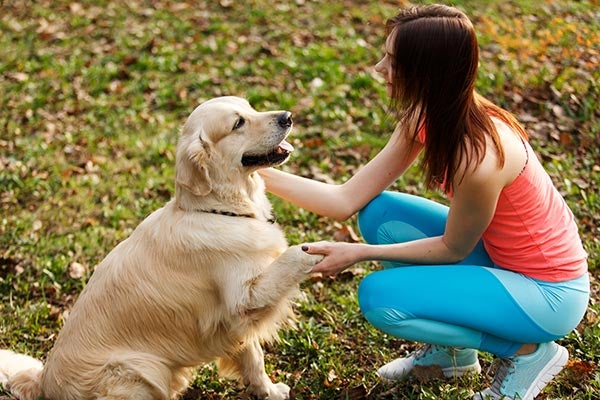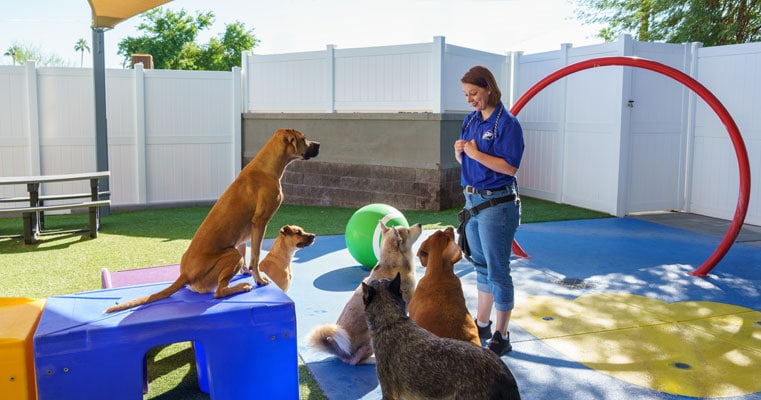The Importance of Patience and Understanding in Dog Training Practices
The Importance of Patience and Understanding in Dog Training Practices
Blog Article
Transform Your Pet's Actions With Proven Training Techniques
Transforming your canine's habits calls for a nuanced understanding of their private characteristics and requirements, in addition to the application of tested training methods. By using favorable reinforcement and identifying crucial add their body movement, you can effectively resolve common behavioral issues such as excessive barking or leaping. Consistency in your training approach not just enhances obedience yet also promotes a much deeper bond of trust fund and regard in between you and your pet. The path to successful makeover may present unanticipated obstacles that warrant more exploration.
Understanding Pet Actions
Understanding pet dog behavior is essential for reliable training and interaction between human beings and their canine companions. Dogs, as social animals, show an array of actions affected by genes, atmosphere, and experiences - Dog training. Acknowledging these behaviors assists proprietors customize their training approaches to satisfy the particular requirements of their pets
Key facets of canine behavior consist of body language, vocalizations, and social interactions. In addition, socializing plays a vital role in forming habits; pet dogs that communicate favorably with various people and various other pets are normally extra well-adjusted and versatile.
In addition, identifying stress signals-- such as avoidance, pacing, or panting habits-- can avoid acceleration into extra significant concerns. Proprietors who are attuned to their dog's behavior can develop a secure and caring setting, cultivating trust fund and improving the training process. Ultimately, a deep understanding of canine behavior lays the foundation for a harmonious relationship and efficient training outcomes, guaranteeing both dogs and their owners thrive together.
Positive Support Techniques
Favorable reinforcement strategies are commonly recognized as one of one of the most efficient methods for training dogs, cultivating a positive learning setting. This method entails satisfying desired actions with treats, appreciation, or play, consequently encouraging the pet dog to repeat those actions. Unlike punitive techniques, positive support builds trust and reinforces the bond between the dog and the instructor.
Benefits must be given quickly following the desired behavior to aid the pet make the link. Consistency is also necessary; utilizing the exact same commands and benefits helps the canine comprehend what is expected.
It is vital to note that favorable reinforcement is not concerning bribery; rather, it has to do with reinforcing great actions. With time, as the pet dog finds out to associate specific activities with favorable end results, the frequency of benefits can be slowly decreased, transitioning to spoken praise or periodic rewards. This approach not just motivates obedience yet likewise advertises a certain and delighted canine, making training a much more pleasurable experience for both parties involved.
Addressing Usual Problems
Resolving common concerns throughout pet dog training is vital for making sure a effective and harmonious partnership between the pet and its proprietor. Many dog proprietors run into behavior obstacles, such as extreme barking, leaping, and chain drawing. Understanding the root creates of these habits is important for efficient training.
To mitigate this, provide ample physical workout, psychological excitement, and opportunities for social interaction with both people and other dogs. Training the dog to sit upon welcoming can reroute this actions favorably.
Chain pulling is one more common problem, often arising from a pet dog's enthusiasm to check out. Utilizing correct leash dealing with techniques, incorporated with training methods that encourage loose-leash walking, can significantly boost this habits.
In addition, concerns like resource guarding or splitting up stress and anxiety need customized strategies. Progressive desensitization and counter-conditioning can be efficient in addressing these challenges. By acknowledging and proactively managing these common concerns, pet proprietors can cultivate a more delightful training experience and strengthen the bond with their canine buddies.
Consistency in Training

To achieve consistency, it is crucial that all members of the house stick to the exact same training approaches. Using the exact same verbal hints and hand signals makes sure that the dog receives consistent messages. Additionally, the timing of rewards and improvements should correspond; prompt reinforcement enhances the likelihood that the canine will connect the behavior with the end result.
Regular technique sessions, paired with organized routines for feeding, strolling, and play, assistance pet dogs anticipate and recognize their atmosphere, making them more receptive to training. Eventually, uniformity promotes a feeling anonymous of protection and depend on, equipping canines to learn more effectively.
Building a Strong Bond
Just how can cultivating a strong bond in between a dog and its proprietor improve the training experience? When a pet really feels safe in its connection with its owner, it is a lot more likely to show favorable actions and be responsive to learning.
Additionally, a solid bond assists in better communication. Pet dogs are adept at reading human cues, and a relying on relationship enables for clearer signals throughout training. Proprietors who invest time in building this bond with play, socializing, and positive support produce an atmosphere where pet dogs feel inspired and eager to discover.
Furthermore, a reputable connection can lower stress and anxiety and behavioral concerns, as pet dogs are much less likely to act out when they really feel understood and cared for. Focusing on the advancement of a strong bond not just improves the training experience however likewise contributes to a better and extra well-adjusted pet. Eventually, the journey of training transforms right into a joint partnership, leading to content lasting behavioral enhancements.
Conclusion

Owners who are attuned to their pet dog's actions can create a safe and nurturing environment, promoting depend on and improving the training process. Inevitably, a deep understanding of canine behavior lays the foundation for an unified relationship and reliable training end results, guaranteeing both pets and their owners prosper together.
Attending to typical concerns during canine training is important for making certain a effective and unified view it relationship in between the pet dog and its proprietor.Uniformity is a keystone of reliable dog training, as it establishes a clear framework for the pet dog to comprehend actions and assumptions.In final thought, transforming a pet's actions through verified training techniques calls for an understanding of canine behavior, the application of favorable support techniques, and an emphasis on consistency.
Report this page